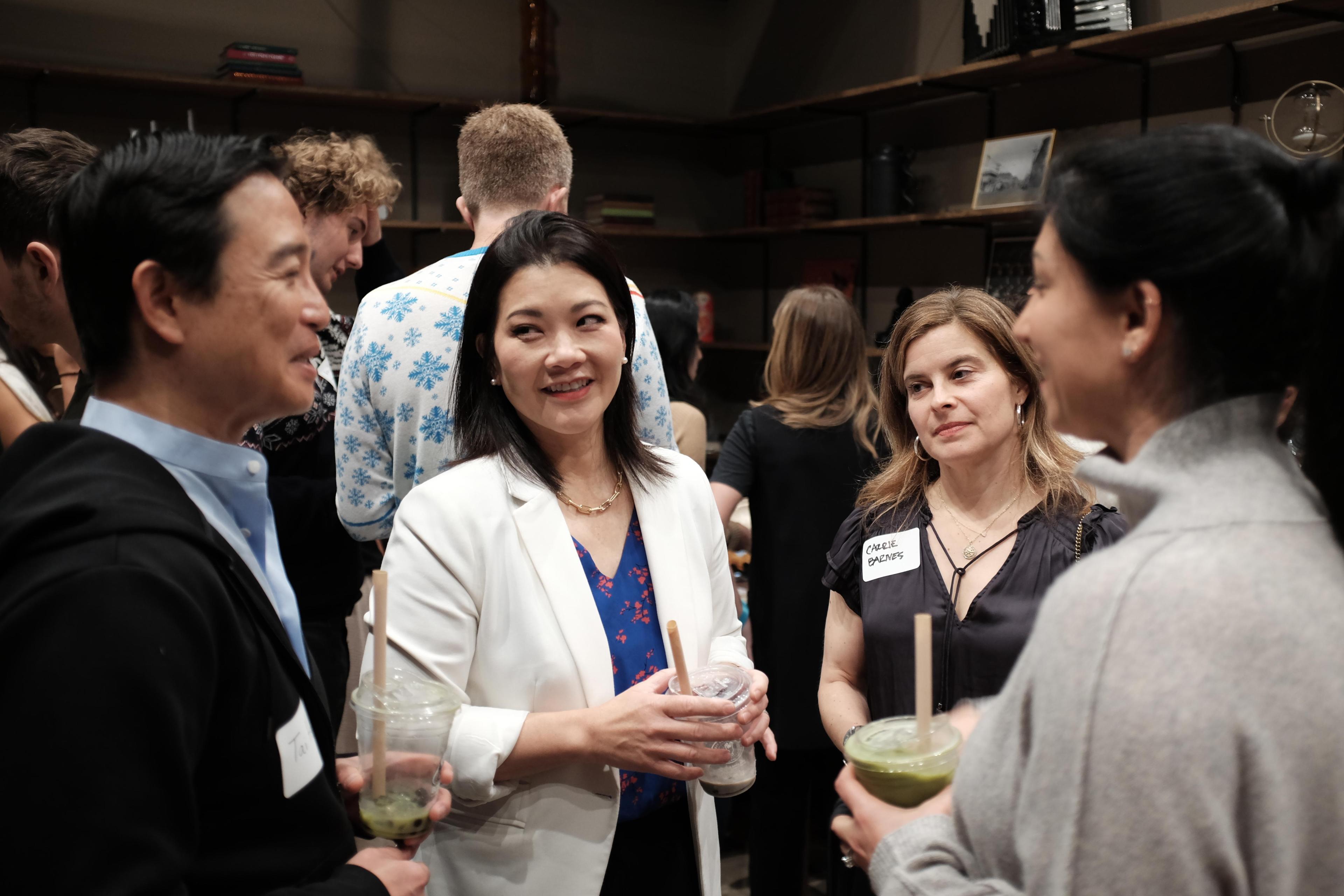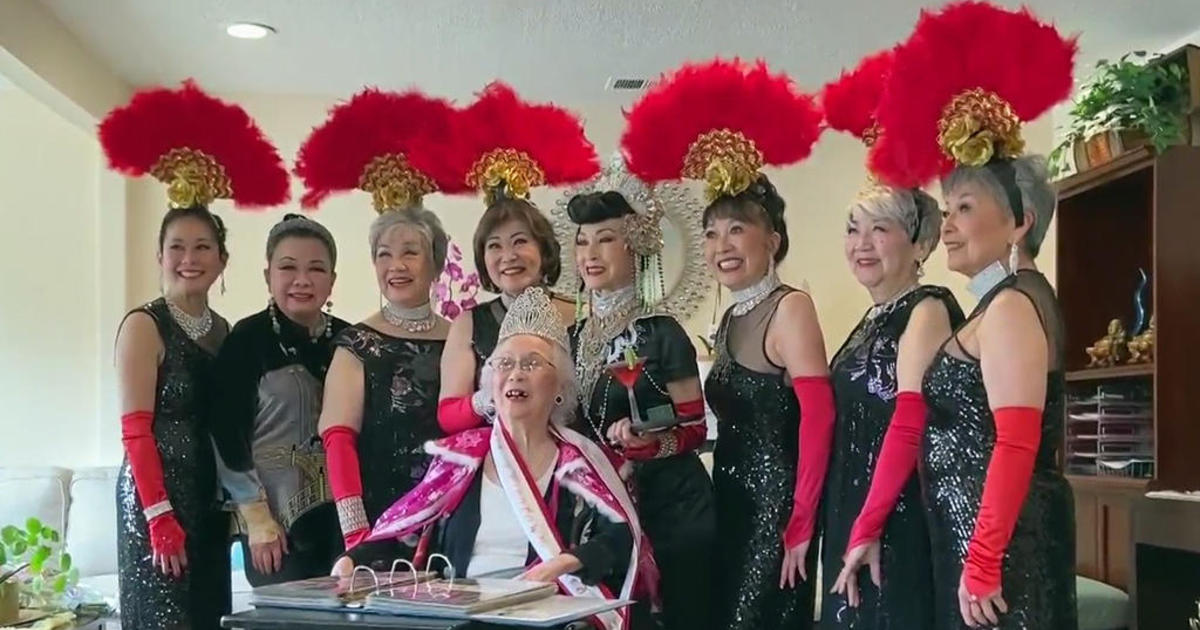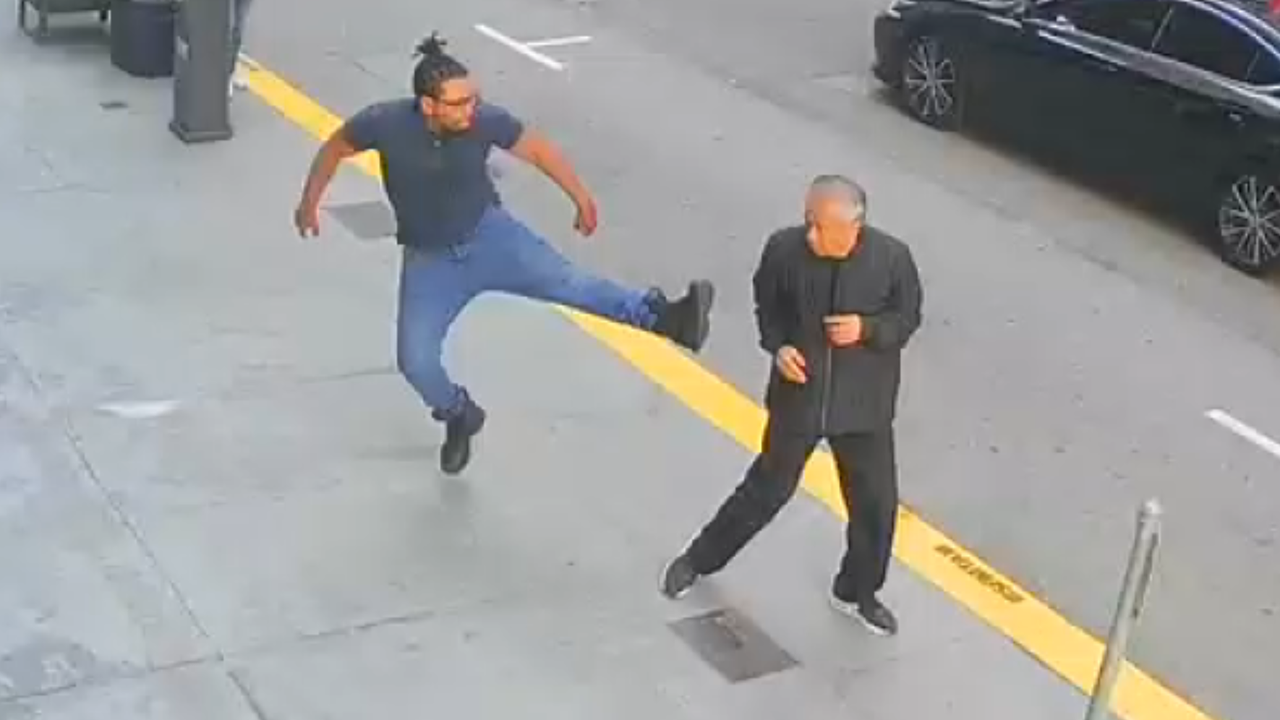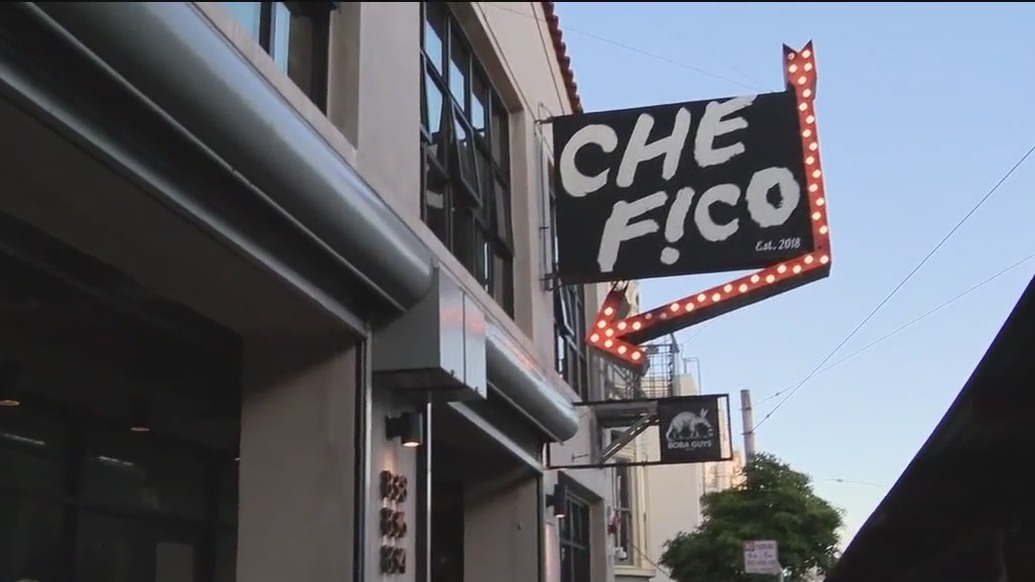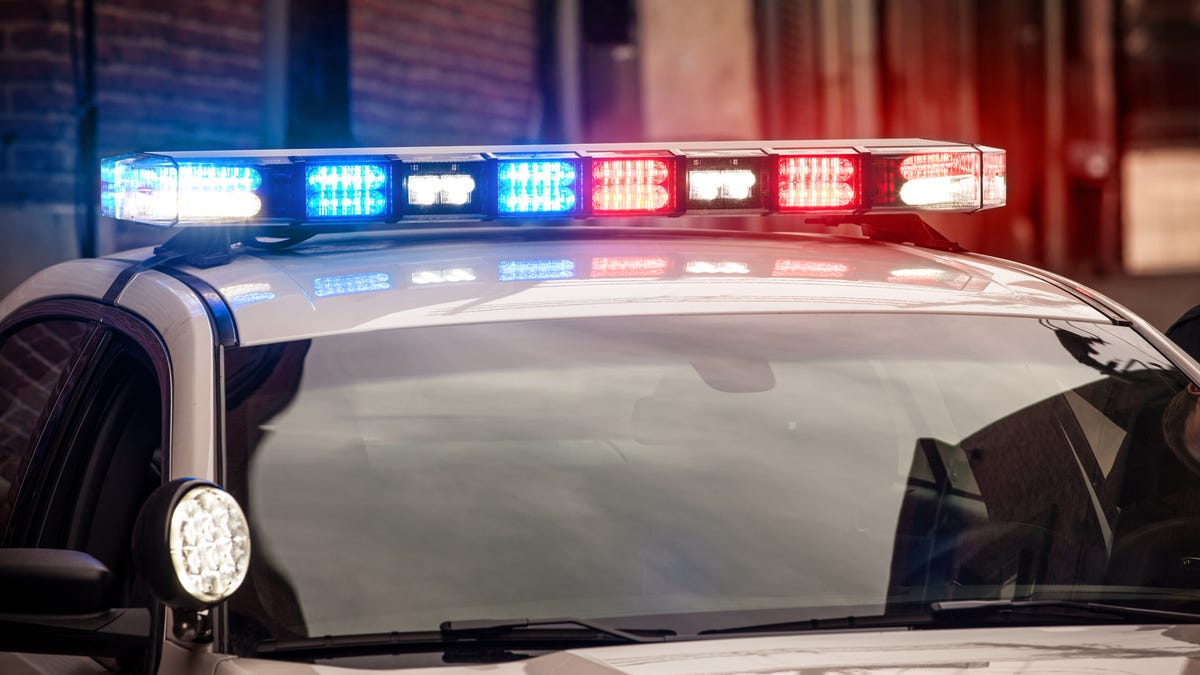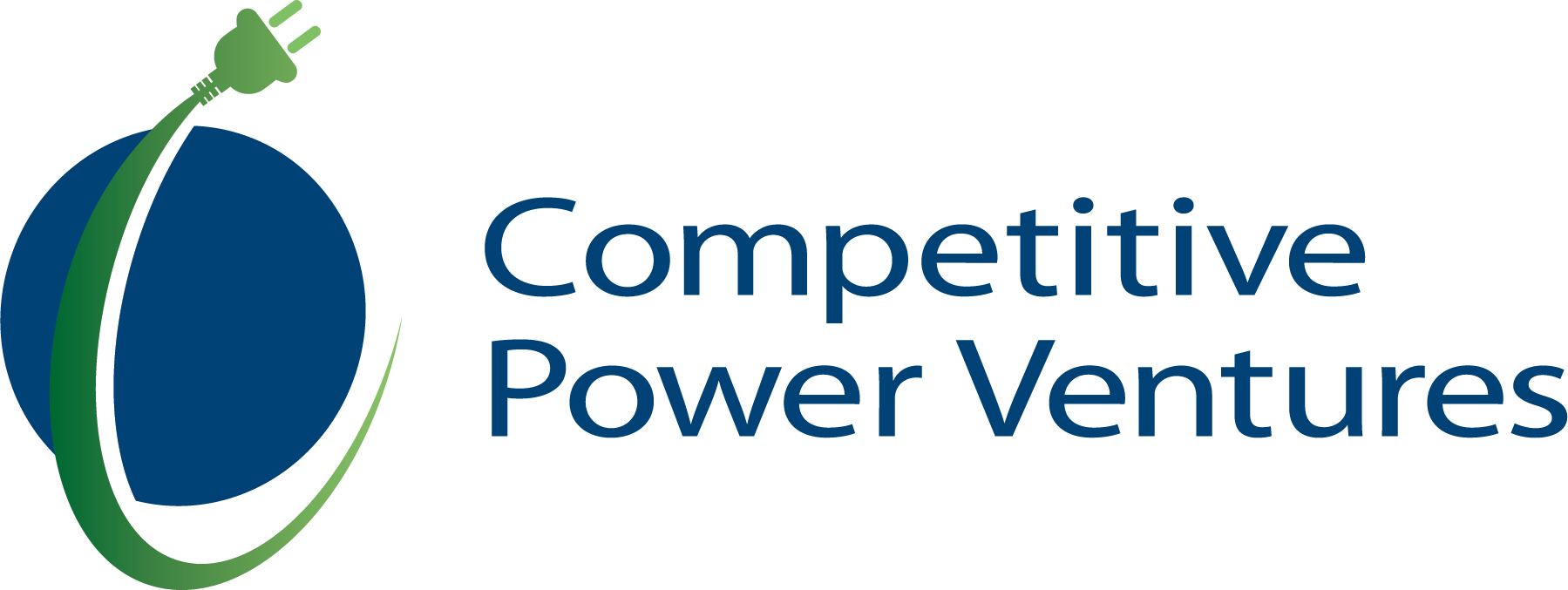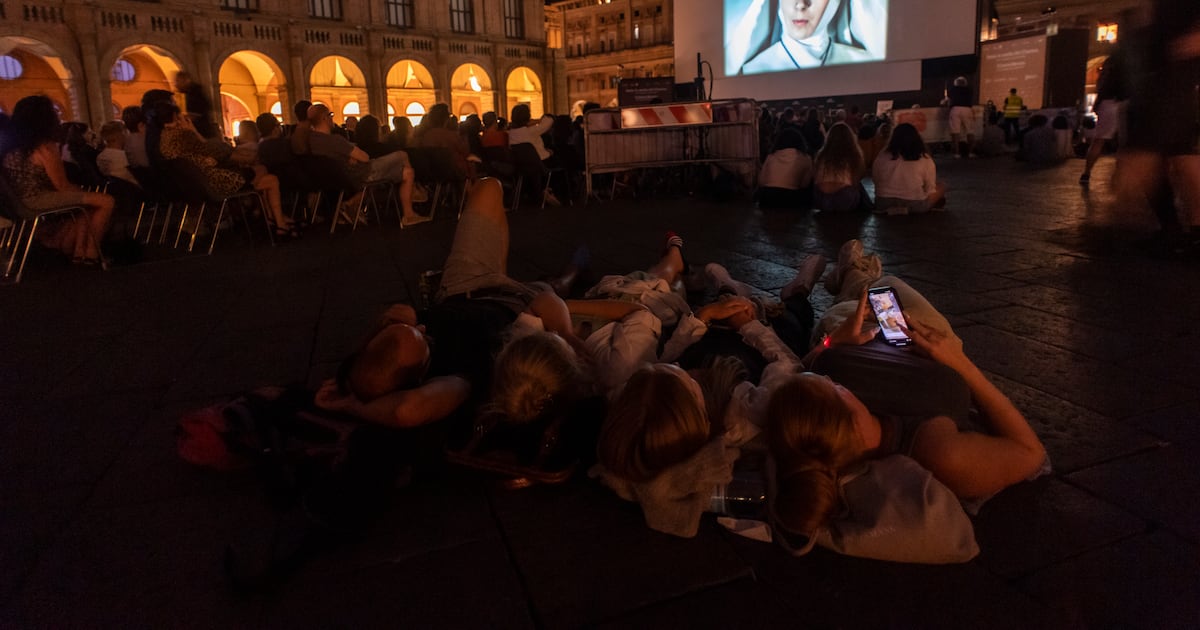In what’s described as a multi-year effort to take control of San Francisco politics, a group of moderate Democrats is planning to take over a low-profile but influential board tasked with steering endorsements in key local races.
San Francisco, CA
SF Moderates Fight for Control of Powerful Democratic Board

On Saturday in Hayes Valley, state Sen. Scott Wiener and Y Combinator CEO Garry Tan stumped for a group calling itself “Democrats for Change,” which is running a slate of candidates for the San Francisco Democratic Party Central Committee.
The committee, known as “D-Trip” to political wonks, is the governing body of the local Democratic Party. Its duties include registering voters and making endorsements that carry the official party endorsement—an endorsement that political observers believe can win or lose elections in deep-blue San Francisco.
“The Democratic County Central Committee is also incredibly important because it built the Democratic Party in San Francisco,” Wiener told an audience of roughly 75 people who sipped boba drinks and snacked on Malaysian food at the afternoon event.
“It… really makes sure that people are engaged in the Democratic Party, so that we have diversity in the Democratic Party and that we make clear that we are a big tent party and we are not a party of ideological purity,” Wiener added.
Entrepreneur Michael Lai, a candidate and co-host of the event, rallied the crowd by ticking off common priorities for local moderates: bringing algebra back to public middle schools, building ample housing and ensuring public safety.
“If you want these things we need to win in November,” Lai said.
The “Democrats for Change” slate is running two dozen candidates across San Francisco and is partially backed by the moderate political group Abundant SF. The group’s director, Todd David, said it has around $500,000 in funds committed to the March 2024 DCCC race so far. Other moderate political groups and clubs are also expected to promote the candidates.
Moderates running for DCCC include Supervisors Catherine Stefani and Matt Dorsey, former assembly candidate Bilal Mahmood and supervisorial candidates Marjan Philhour and Trevor Chandler.
Tan, an investor who’s known for taking swings at progressives on his X account, took the floor with words of praise for Wiener and Nancy Tung, a prosecutor and one in a small group of moderates currently serving on the central committee.
“[Progressives] are afraid because they should be afraid,” Tan said. “They are not going to win anymore.”
Lai described the effort to take control of the committee as part of a long-term effort to steer San Francisco politics in a more “pragmatic” direction.
“Right now, I think the [Democratic County Central Committee] is not very representative of the majority of San Francisco,” Lai said.
“It’s out of touch, endorsing two of the three members of the school board who were recalled and endorsing against the DA recall,” Lai added, pointing to the 2022 recalls of school board members and former District Attorney Chesa Boudin.
The central committee race—an obscure contest often glossed over by voters—is viewed as a prelude to key November races that could further shake up the Board of Supervisors, where progressives who largely oppose Mayor London Breed hold a narrow majority.
Six of the board’s 11 seats will be up for grabs. The committee will be making endorsements up and down the ballot, holding sway in what could be a highly competitive mayor’s race and other contests.
On the other side of San Francisco’s narrow political aisle—the city’s politics are split between moderate and progressive Democrats—progressives are running their own labor-backed slate of candidates. Progressives who have filed to run include former Supervisors John Avalos and Jane Kim, City College Trustee Vick Chung and Frances Hsieh, an aide to Supervisor Connie Chan.

San Francisco, CA
With a vest and a voice, helpers escort kids through San Francisco’s broken Tenderloin streets
SAN FRANCISCO (AP) — Wearing a bright safety vest with the words “Safe Passage” on the back, Tatiana Alabsi strides through San Francisco’s Tenderloin neighborhood to its only public elementary school, navigating broken bottles and stained sleeping bags along tired streets that occasionally reek of urine.
Along the way in one of America’s most notorious neighborhoods, she calls out to politely alert people huddled on sidewalks, some holding strips of tin foil topped with illicit drugs.
“Good afternoon, happy Monday!” Alabsi says to two men, one slumped forward in a wheelchair and wearing soft hospital socks and one slipper. Her voice is cheerful, a soothing contrast to the misery on display in the 50-block neighborhood that’s well-known for its crime, squalor and reckless abandon. “School time. Kids will be coming soon.”
Further along, Alabsi passes a man dancing in the middle of the street with his arms in the air as a squealing firetruck races by. She stops to gently touch the shoulder of a man curled up in the fetal position on the sidewalk, his head inches from the tires of a parked car.
“Are you OK?” she asks, before suggesting he move to a spot out of the sun. “Kids will be coming soon.”
Minutes later, Alabsi arrives at the Tenderloin Community Elementary School, where she is among several adults who escort dozens of children to after-school programs. The students hitch up backpacks emblazoned with Spider Man and the sisters of “Frozen,” then form two rambunctious lines that follow Alabsi like ducklings through broken streets.
The smallest ones hold hands with trusted volunteers.
Long known for its brazen open-air drug markets, chronic addiction, mental illness and homelessness, the Tenderloin neighborhood is also home to the highest concentration of kids in San Francisco, an estimated 3,000 children largely from immigrant families.
The neighborhood is rich with social services and low-income housing but the San Francisco Police Department also has seized nearly 200 kilograms (440 pounds) of narcotics in the area since last May. Of a record 806 overdose fatalities last year, about 20% were in the Tenderloin.
But amid the chaos is a vibrant community stitched together by differing languages that has found ways to protect its most vulnerable and deliver hope, something many say the city has failed to do. Officials have sent in toilets, declared a mayoral emergency and vowed to crack down on drugs, but change is glacial.
A group of mothers fed up with drug dealers started the efforts in 2008 after a child temporarily went missing. The Safe Passage program is now part of the Tenderloin Community Benefit District, a nonprofit funded in part by Tenderloin property owners who also cleans sidewalks, staffs parks and hosts community events.
Alabsi started as a volunteer after the Russian native moved to the United States from Yemen with her husband and sought asylum a decade ago. They joined her husband’s mother and his siblings, who had settled in the Tenderloin.
Life was not easy in their new homeland. Alabsi, 54, and her husband Jalal, both medical doctors, had to start over years into their careers. The mother of two despaired when her younger son began to count poop piles he spotted from his stroller on their walks home from daycare.
Then she learned of Safe Passage. At her husband’s urging, she signed up to volunteer to help spare the children the worst sights on their walk after school.
Many people, Alabsi says, respond politely or tuck away their drugs or scoot their belongings out of the way when she reminds them that school time is over. But others ignore the request. Some even get angry.
“It’s better to give nice smile and say good afternoon or good morning, to show people I am friendly,” said a laughing Alabsi, who is fluent in Arabic and Russian and speaks English with an accent. “I am not monster.”
The program’s safety stewards guide the students along the cleanest and calmest routes, redirecting them to avoid people acting erratically or overdosing. Sometimes stewards use their bodies to block the children from seeing things they shouldn’t, like a woman crouched between two cars, no longer able to control her bowels.
On a recent afternoon, two girls with ponytails sashayed across an intersection, talking about becoming TikTok stars one day, seemingly oblivious to a couple hunched over at a bus stop across the street, struggling to light up. As they walked, Alabsi blocked their view of smeared feces.
The girls, one in first grade and the other in second, were headed to the Cross Cultural Family Center, one of some half-dozen nonprofits that provide after-school programs for the K-5 kids.
Alabsi and her immediate family moved out of the Tenderloin but are still an integral part of it. Their son is in the elementary school’s fourth grade and Alabsi now manages the Safe Passage program.
She loves the mix of Latin, Asian, Arab and American cultures in the Tenderloin. The big hearts of residents who are striving for a better life is what “makes it special,” she said.
One recent Saturday, Alabsi worked at an Eid celebration at the neighborhood’s recreation center. She helped monitor the block that was closed to traffic for the day while greeting her sisters-in-laws, who had joined the festivities with their children.
When the celebration ended at 4 p.m., she left with her soccer-loving son, Sami, to drop off her vest and radio at the office. They chatted in Russian as they passed tents, sleeping bags and blankets, an abandoned microwave and lawn chair and a human-shaped lump under a blanket, shoes peeking out.
From loud speakers, the doo-wop of The Moonglows singing “Sincerely” soared prettily over gritty streets. On a pole was a flyer with photos of a missing daughter: “Mimi please call home,” read the April notice. “You are so loved.”
“We can change world in better way by our presence, by our examples, by our positive attitude,” Alabsi said. “Every year it’s little bit better and better and better.”
___
Associated Press journalist Terry Chea contributed to this report.
San Francisco, CA
Bay Bridge lights to return with almost double the number of lights, better visibility
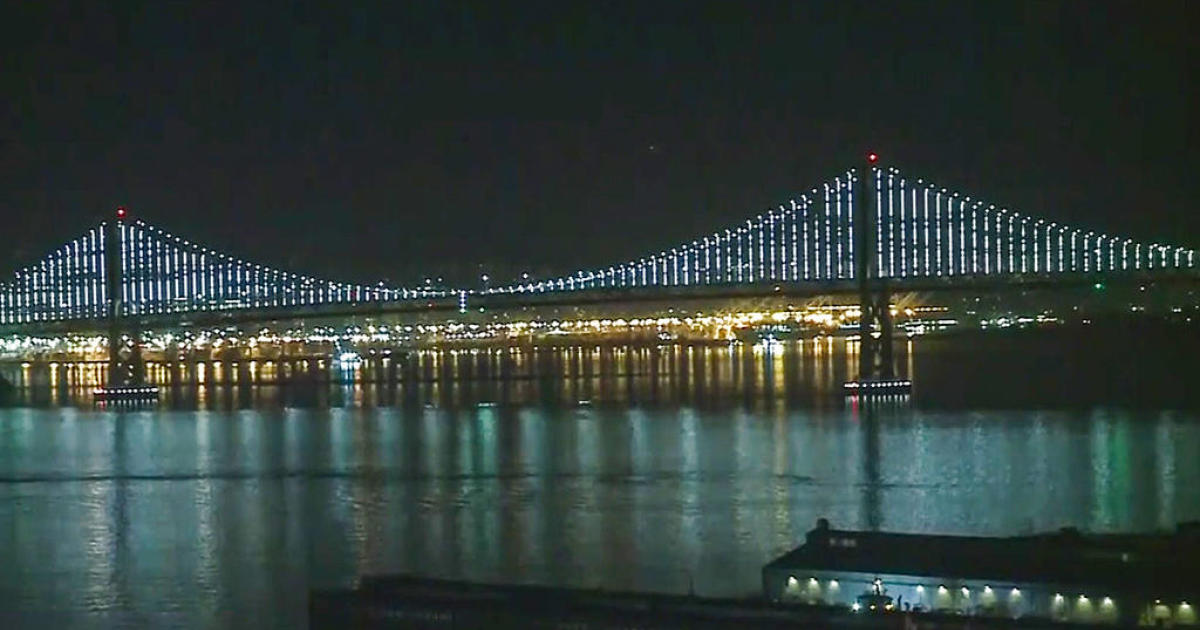
SAN FRANCISCO — For ten years, the Bay Bridge lights brought a sparkle to San Francisco’s skyline.
The feeling that came along with looking up at them was one of awe, said Ben Davis, the founder and Chief Visionary Officer of Illuminate, the art nonprofit behind the installation
“It just makes you want to reach out and grab the hand of the person next to you – it doesn’t make a difference who they are,” he said. “There is something that really brings us into a sense of humility through awe that unleashes the better nature of our character.”
But the lights had to go dark in 2023.
“I feel like there is a hole in the night sky, and there has been for the past year,” Davis said.
The lights first lit up in 2013. What was originally meant to be a two-year art display ended up turning into 10 years. But, over time, many of the lights lost their luster.
“The Bay Bridge is a really harsh environment for electronics. So, they were suffering,” Davis said. “Really, rather than letting them decay into oblivion, which is a bad look for San Francisco, we did the responsible thing: We took them down and set about bringing them back in a new configuration – really designed to do well over time on this side of the Bay Bridge.”
Now dubbed “Bay Lights 360,” the new public art installation with have around 50,000 LED lights – about double the original number – and better visibility.
“We’re going to wrap both sides of the cable so people can see it not just from San Francisco and the North Bay – but as a matter of aesthetic equity, to communities all around the Bay,” Davis said.
The revamp was made possible after the art nonprofit’s successful fundraising campaign.
“We’ve received $10 million in major gifts to bring the artwork back, which is exciting. We’re actually at $10.5 million raised so far. The $11th million we are raising through not major gifts, but actually just through crowdfunding,” Davis said.
Davis said the contributions came from people, not government organizations or corporations.
“We didn’t seek any city funds because we really didn’t want to rob the public art community in San Francisco and other organizations that could use it more,” he said. “I have deep faith and love for the place in which we live, and I find it an honor to have gestures like the Bay Lights manifest in the world with the help of thousands of people bringing together this culture of generosity to make it happen.”
He said they’re working on building the materials now and will begin installing the lights in the fall. The plan is to have them shining again sometime around March of 2025.
San Francisco, CA
San Francisco Giants Star Moved To Injured List Before Phillies Game
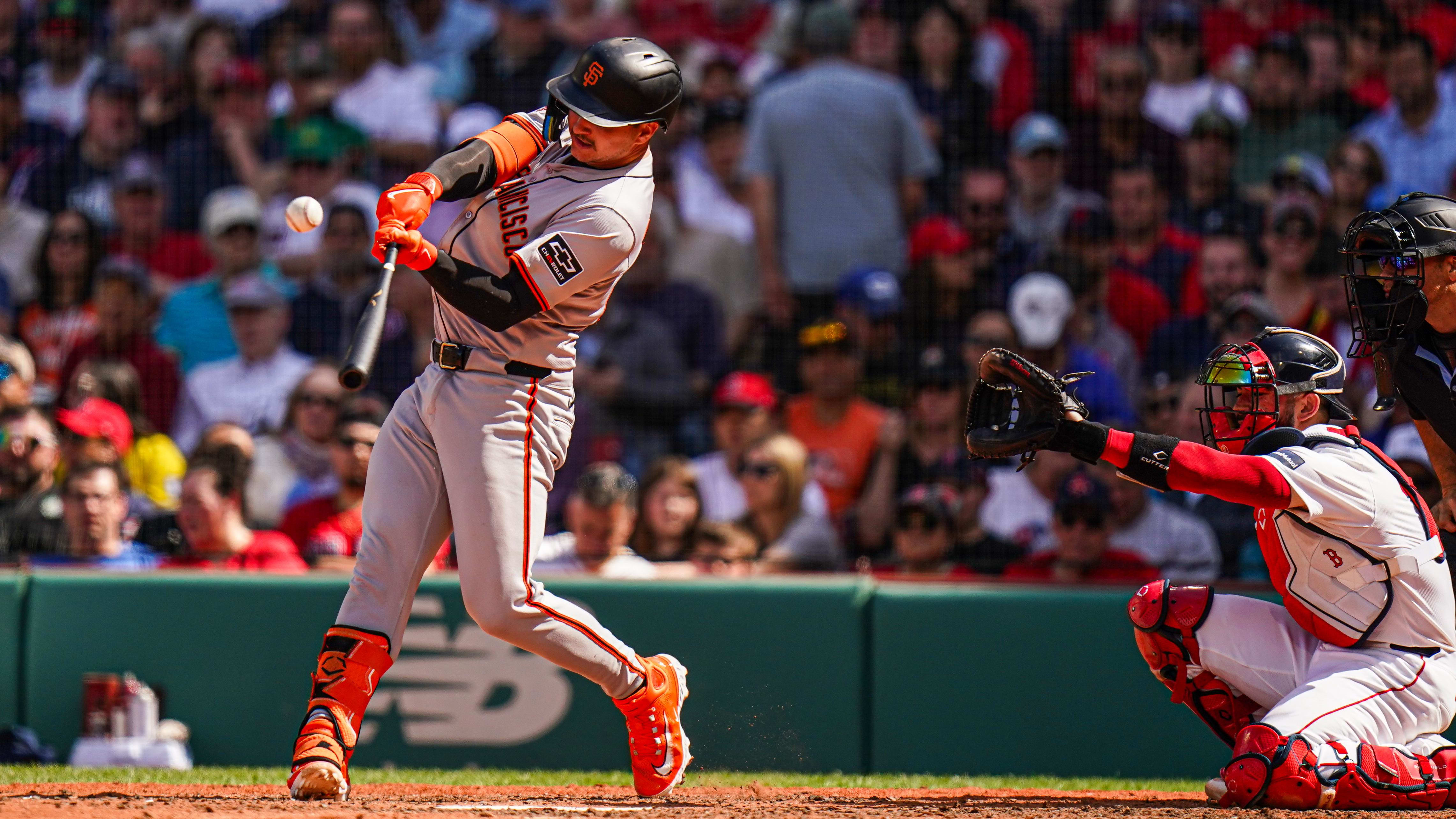
In advance of their game with the Philadelphia Phillies, the San Francisco Giants moved catcher Patrick Bailey to the 7-day injured list for a concussion, per multiple reports.
Bailey was moved to the list after he took a direct shot from a foul ball off his facemask during Friday’s opener with the Phillies. Phillies third baseman Alec Bohn hit that foul ball, which tipped right off his bat and hard into Bailey’s facemask.
He met with trainers after the injury and returned to the game in the second inning. But, after catching a pitch or two from starter Jordan Hicks, he signaled for trainers and complained of blurry vision and left the game.
The Giants did not put him in concussion protocol after the game.
To take Bailey’s stop on the roster, the Giants called up Blake Sabol.
Bailey recently became the first catcher in Major League history to turn a double play, catch a shutout and hit a walk-off home run in the same game when the Giants played the Pirates last month.
In 25 games this season he has slashed .278/.344/.456/.800 with three home runs and 10 RBI. He was a rookie last season and batted .233 with seven home runs and 48 RBI.
He suffered a concussion last season when he had a collision of Jeimer Candelario on a play at home plate. That landed him on the concussion list and he now wears a Q-collar, an FDA-approved concussion prevention device that gently compresses the neck to keep more blood volume inside the head.
Sabol is the only other catcher on the Giants’ 40-man roster. The former Rule 5 Draft selection was batting .243 with one home run with Triple-A Sacramento.
-

 News1 week ago
News1 week agoFirst cargo ship passes through new channel since Baltimore bridge collapse
-

 World1 week ago
World1 week agoHaiti Prime Minister Ariel Henry resigns, transitional council takes power
-

 Movie Reviews1 week ago
Movie Reviews1 week agoAbigail Movie Review: When pirouettes turn perilous
-

 World1 week ago
World1 week agoEU Parliament leaders recall term's highs and lows at last sitting
-

 Politics1 week ago
Politics1 week ago911 call transcript details Democratic Minnesota state senator’s alleged burglary at stepmother's home
-

 Science1 week ago
Science1 week agoOpinion: America's 'big glass' dominance hangs on the fate of two powerful new telescopes
-

 Politics1 week ago
Politics1 week agoGOP lawmakers demand major donors pull funding from Columbia over 'antisemitic incidents'
-

 World1 week ago
World1 week agoHamas ‘serious’ about captives’ release but not without Gaza ceasefire
